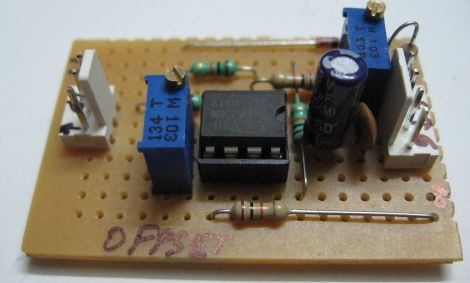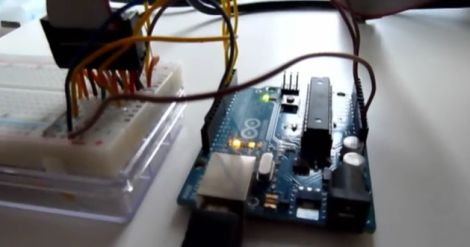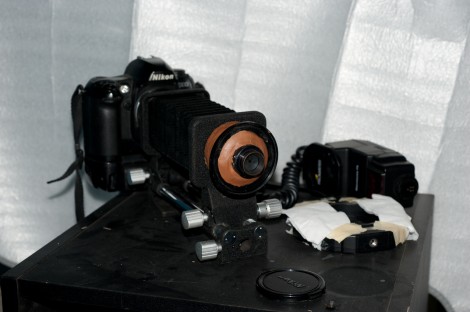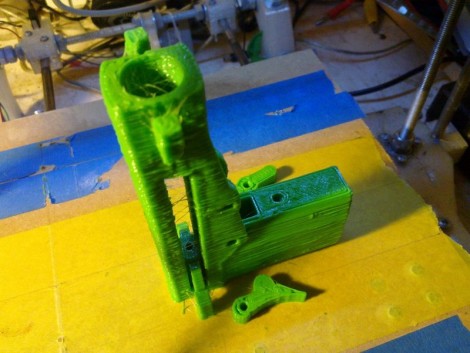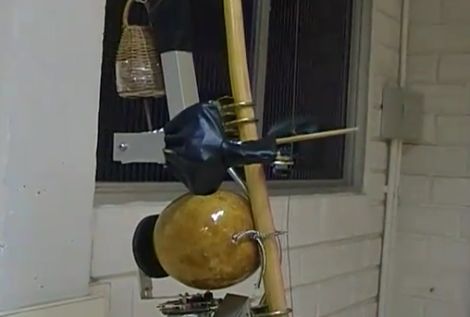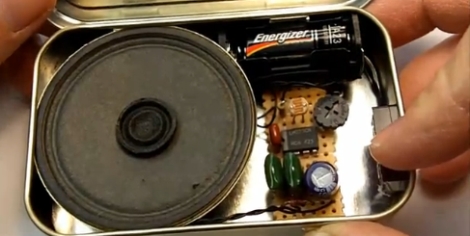
[Brett] over at FightCube was tossing around ideas to build a screaming prank circuit that fits inside an Altoids tin. Sound familiar? We featured a story just a few days back about the construction of a very similar item by [Dino Segovis]. It seems that great minds think alike after all!
[Brett’s] version is a bit more robust than the one we featured the other day. It’s similar to [Dino’s] in that it uses a 555 timer in astable mode, triggered by a normally-closed microswitch when the tin is opened. However, this version also includes a photoresistor which is used to increase the pitch and speed of the output as more light enters the box. This creates a growling effect that builds up into a scream as the box is opened. [Brett] has also included an adjustable pot which allows the sound range to be tweaked to his liking.
Stick around for a video walkthrough of the screamer circuit as well as a demo of the Altoids tin in action.

